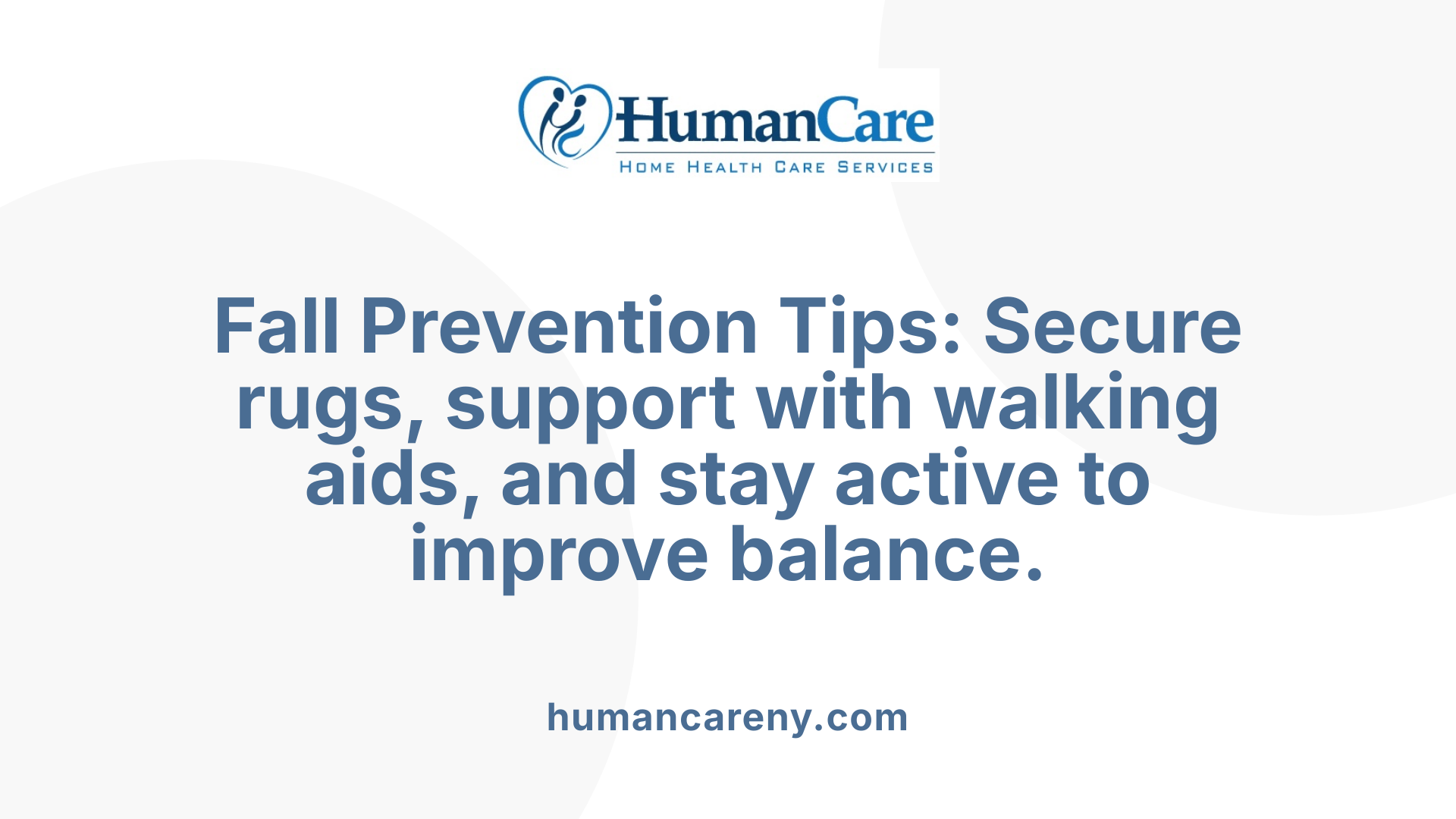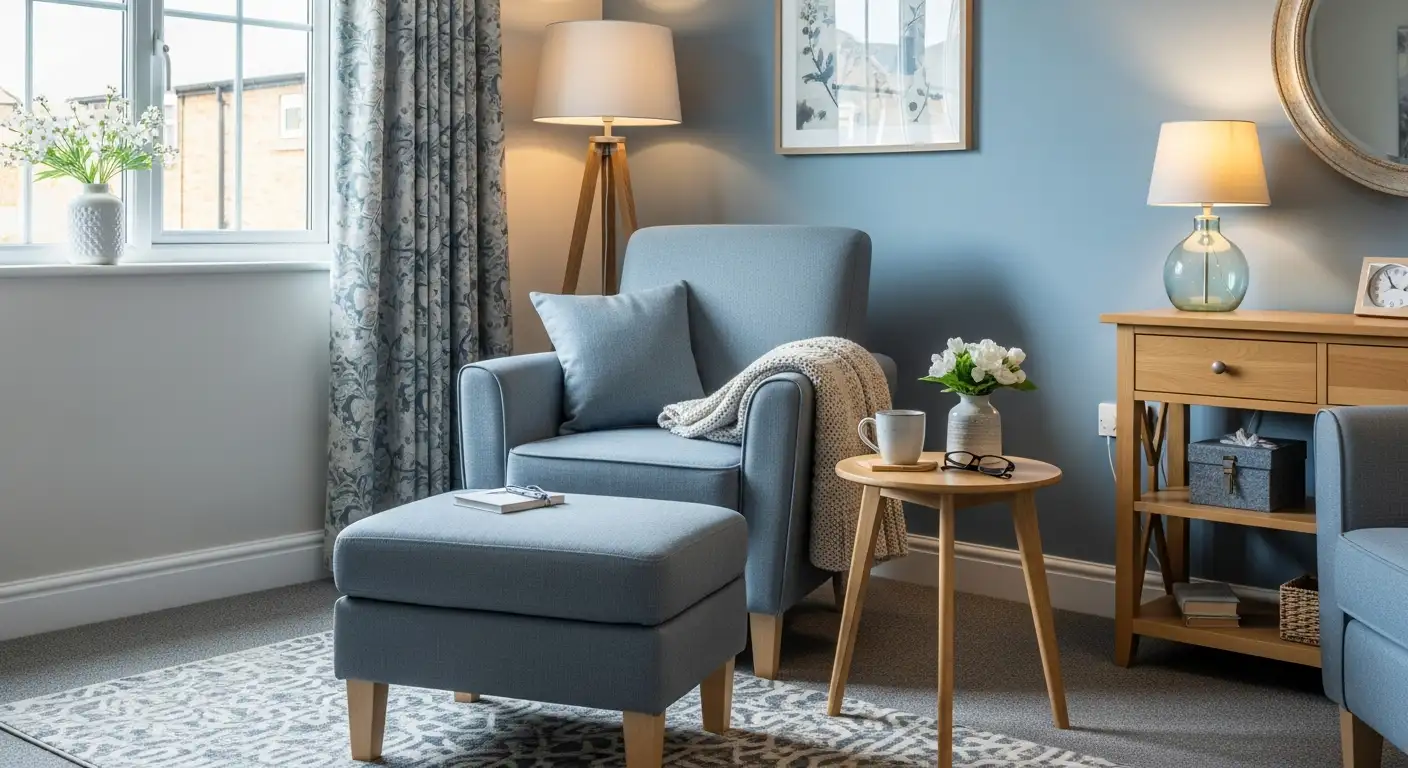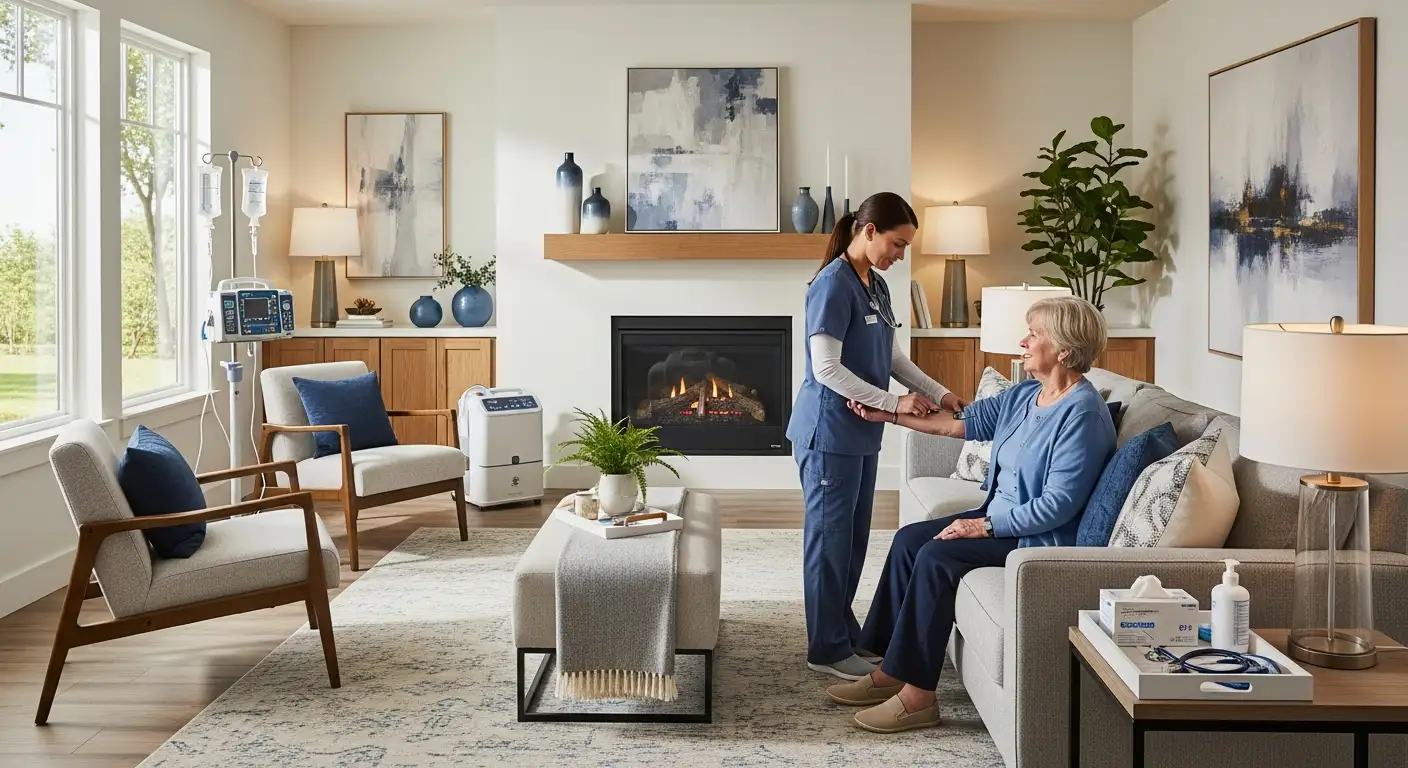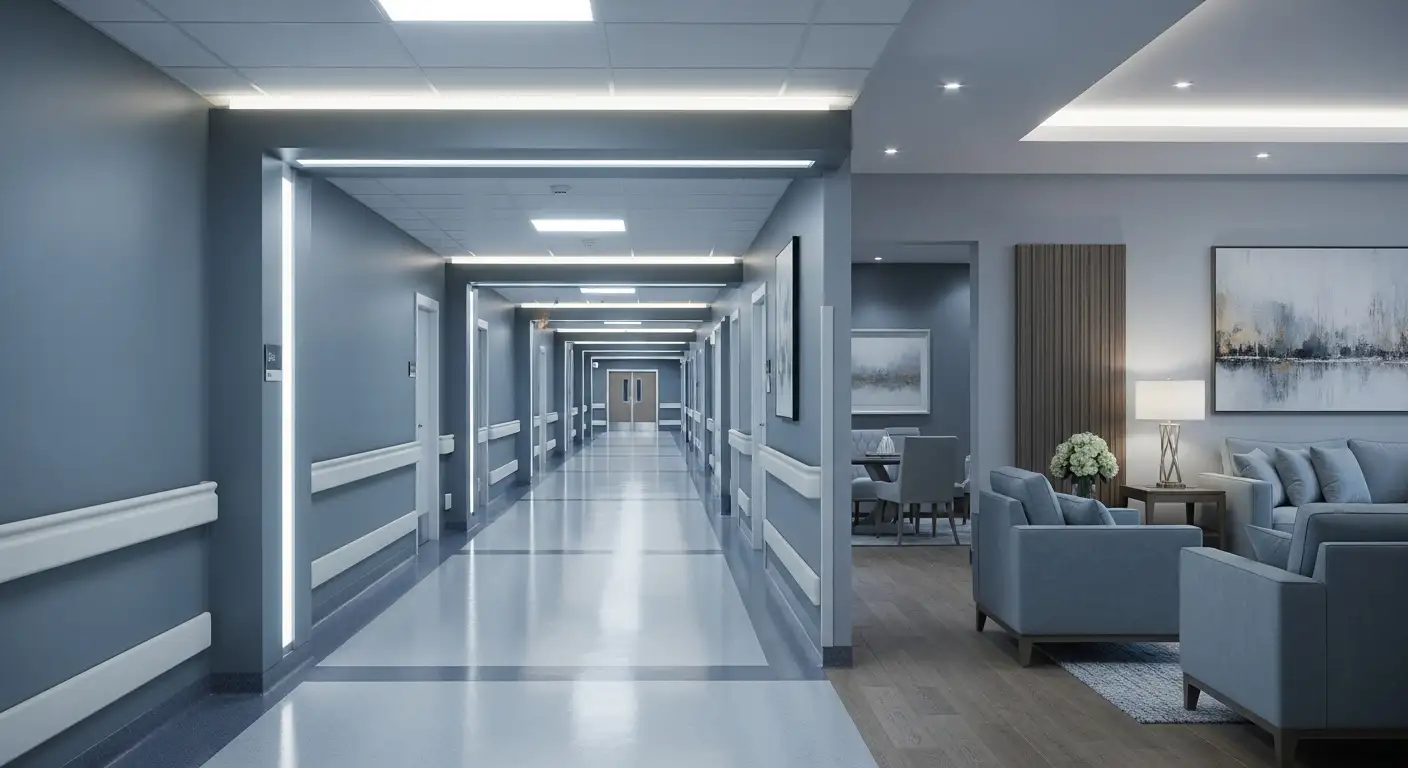Prioritizing Elderly Safety in the Comfort of Home
Creating a safe and supportive environment for seniors receiving in-home care is essential for promoting independence, reducing injury risks, and ensuring prompt emergency response. Through strategic modifications, safety assessments, and caregiver education, families and care providers can significantly enhance in-home safety. This comprehensive guide explores vital safety considerations, practical modifications, and safety protocols tailored to meet the unique needs of elderly individuals, including those with cognitive impairments such as dementia or Alzheimer’s disease.
Preventing Falls and Injuries in the Home

What are essential home safety tips for older adults to prevent falls and injuries?
Creating a safer living environment is fundamental to preventing falls and injuries among older adults. A practical first step is identifying and removing trip hazards. Loose rugs should be secured tightly with slip-resistant backing or removed altogether. Carpets that are not firmly fixed can cause dangerous falls, so ensuring they are securely attached to the floor is vital.
Walkways and hallways need to be clear of clutter, cords, and furniture that may obstruct movement. Proper lighting plays a crucial role; well-lit spaces help older adults see and avoid hazards. Installing bright lighting, especially at staircases and in bathrooms, significantly reduces the risk. Nightlights are recommended in bedrooms, hallways, and bathrooms to enhance visibility during nighttime trips.
Safety modifications such as installing grab bars near toilets, in showers, and bathtubs can provide immediate support and reduce fall risk. Non-slip mats or strips in wet areas further increase safety by preventing slips. Homeowners should regularly test handrails and staircases to ensure they are secure and sturdy.
Encouraging the use of non-slip footwear over socks or slippers can prevent slipping. Additionally, water heater thermostats should be set to no more than 120°F to avoid scalding. Periodic assessments by professionals can identify potential hazards and recommend necessary modifications to improve safety.
Overall, a combination of environmental adjustments—such as improved lighting, safety fixtures, and hazard removal—can significantly decrease fall risk and help older adults maintain independence within their homes.
Safety Considerations for Seniors Living Alone

What are important safety considerations for seniors living alone?
Keeping seniors safe while they live independently involves multiple strategies aimed at preventing accidents and ensuring prompt emergency responses. Home modifications play a crucial role; installing grab bars near toilets and in showers, adding non-slip mats, and ensuring proper lighting—especially in stairways, hallways, and outdoor paths—can reduce fall risks. Regularly checking and removing environmental hazards such as clutter, loose rugs, and unsecured cords helps prevent trips.
Safety devices like smoke detectors and carbon monoxide alarms should be installed and tested regularly to alert residents to dangers early. A comprehensive safety assessment of the home can reveal risks like poor lighting, leaks, or inadequate emergency exits, guiding necessary improvements. Community engagement is equally vital; maintaining regular contact with family, friends, or neighbors provides additional support and monitoring.
Equipping the home with emergency alert systems, keeping emergency numbers handy—such as 911, Poison Control, and healthcare providers—and having a medical alert device can facilitate quick help during health crises. Safety extends to kitchen precautions, like turning pan handles inward and storing hazardous household chemicals out of reach to avoid poisoning or fires.
Medication management is another essential aspect; using pill organizers, storing medicines securely, and maintaining an updated list enhances safety. Fire safety protocols include regular fire drill practice, keeping fire extinguishers accessible, and ensuring escape routes are clear and known.
By combining environmental safety measures with community support and emergency preparedness, seniors living alone can enjoy greater independence without compromising safety, ensuring peace of mind for both residents and their loved ones.
Key Strategies to Prevent Falls in Elderly Residents

What are key safety measures to prevent falls among elderly residents?
Preventing falls is crucial to safeguarding older adults from serious injuries and maintaining their independence. Several safety strategies can significantly reduce the risk of falls in the home environment.
One of the most effective measures is home safety modification. This includes removing loose rugs, securing carpets firmly to the floor, and installing grab bars near toilets, in showers, and on stairways. Proper lighting is essential, especially at staircases, hallways, and outside pathways. Nightlights and accessible flashlights can help seniors see clearly during nighttime visits to the bathroom.
Supporting footwear also plays a vital role. Elderly individuals should wear supportive, nonslip shoes rather than socks, slippers, or walking in slippers on smooth surfaces. This helps improve traction and stability while walking.
Regular physical activity focusing on balance, strength, and flexibility is another key approach. Exercises like Tai Chi, yoga, or simple sit-to-stand routines can strengthen muscles and improve coordination, effectively reducing fall risk.
Health evaluations are equally important. Healthcare providers should review medications for side effects such as dizziness or drowsiness, conduct vision and hearing tests, and assess other risk factors like muscle weakness or poor balance. Regular check-ups help identify and address hazards before falls occur.
Furthermore, assistive devices like canes or walkers should be used correctly and maintained in good condition. Seniors should learn safe techniques for getting up after a fall or near-fall situation.
An emergency plan is essential too. Ensuring that emergency contacts are easily accessible and that seniors carry medical alert devices can facilitate rapid response in case of an incident.
Incorporating these strategies—home modifications, proper footwear, physical exercises, regular health screenings, and safety devices—creates a comprehensive approach to fall prevention. Such measures not only protect elderly residents but also promote confidence and independence in daily life.
Safety Tips for Home Visitors and Caregivers

What safety considerations are important when visiting a person’s home to provide care or support?
When visiting a person’s home, safety should be a top priority. Caregivers and home visitors need to be alert to potential hazards that could pose risks to their safety. These hazards include weapons, aggressive animals, or chemicals that might be stored improperly. Structural issues like loose flooring, poor lighting, or pest infestations can also increase risk.
Before visiting, it's vital to verify the address and plan for safe parking in well-lit areas. Informing a family member or supervisor about your schedule adds an extra layer of security. Throughout the visit, stay aware of behavioral cues such as hostility, tension, or signs of domestic violence—they may indicate unsafe situations.
Trust your instincts: if something feels off or unsafe, it’s best to leave the premises. Using protective body language, maintaining a professional posture, and carrying communication devices or personal safety tools (like a whistle or alarm) can help manage risks.
Good hygiene practices, avoiding valuables during visits, and having a clear emergency plan are essential for ensuring safety. These precautions help create a safer environment for both the caregiver and the person receiving care, fostering trust and supporting a positive outcome.
Effective Household Hazard Management
What are the best practices for household hazard management to keep elderly individuals safe?
Managing household hazards effectively is vital in preventing accidents and ensuring the safety of older adults at home. The process begins with conducting thorough safety assessments, which can be guided by tools like the CDC’s Home Fall Prevention Checklist. These assessments help identify potential risks such as loose handrails, cluttered walkways, poor lighting, and wet or slippery surfaces.
Once hazards are identified, specific modifications can dramatically reduce risks. Installing grab bars near toilets and in showers, securing rugs with non-slip pads or tape, and ensuring all areas are well-lit with night lights help improve safety. Removing electrical cords and clutter from walkways, and making sure all flooring is even and slip-resistant, reduce trip hazards.
Regularly maintaining safety devices like smoke detectors, carbon monoxide alarms, and fire extinguishers is essential. Setting water heater thermostats to no more than 120°F helps prevent scalding accidents.
Home modifications should also focus on improving accessibility: widening doorways, adding ramps for mobility, and installing sturdy handrails on stairs promote independence.
Lastly, fostering awareness through caregiver and family education on hazard prevention and emergency response plans creates a safer environment. These proactive strategies collectively sustain elderly safety and promote independent living.
Managing Medications and Medical Devices Safely at Home
What safety tips should caregivers follow to prevent medical device or medication-related injuries?
Caregivers play a vital role in ensuring medication safety in the home, especially for older adults with complex medication regimens. First, all medications should be clearly labeled in their original containers, and stored out of reach of children and pets to prevent accidental ingestion. Regularly checking medications for expiration dates, proper storage conditions, and ensuring that pills are intact helps avoid administering outdated or compromised drugs.
Using medication management tools, such as pill organizers, blister packs, or reminder systems, can greatly improve adherence and reduce errors. Educating seniors about how to read labels, follow dosing instructions, and understand possible food-drug interactions is essential for safe medication use. Caregivers should also be familiar with each medication’s purpose and potential side effects to recognize adverse reactions early.
Monitoring the effects of medications and maintaining an updated medication list—covering prescription drugs, over-the-counter medications, and supplements—facilitates effective communication with healthcare providers. Open dialogue with doctors, pharmacists, and nurses ensures prescriptions are accurate, appropriate, and safe.
In addition to medication management, proper use and maintenance of medical devices are crucial. Caregivers should receive training on device operation, cleaning, and troubleshooting. Regularly inspecting devices to confirm they’re functioning correctly helps prevent failures that could cause injury.
Finally, ongoing support involves observing the home environment for hazards related to devices, ensuring emergency contacts are accessible, and educating the elderly on recognizing abnormal symptoms or reactions. Clear communication with healthcare professionals helps coordinate care and swiftly address any issues, reducing the risks associated with medication errors and medical device use.
Creating a Safer Living Space for a Confident Future
Overall, ensuring safety for elderly individuals receiving in-home care requires a proactive approach that combines environmental modifications, regular safety assessments, caregiver education, and emergency preparedness. By addressing hazards specific to the home environment, such as fall risks, fire hazards, poisoning routes, and medical device safety, families and caregivers can foster independence while minimizing danger. Incorporating smart technologies, community resources, and professional support can further enhance safety and peace of mind. Ultimately, a comprehensive safety strategy promotes not only physical well-being but also confidence and quality of life for elderly at home.
References
- Infographic: Home Safety Tips for Older Adults
- Tip Sheet: Home Safety Tips for Older Adults - Health in Aging
- Ensuring Safety & Security in an In-Home Care Environment
- Home Safety Tips For Elderly - Kuakini.org
- Home Safety Tips for Home Health Patients
- Home Safety | Alzheimer's Association
- Safety in the Home When Caring for Older Adults
- Safety Tips for Home Care - Comfort Keepers
- Household safety checklist for senior citizens



